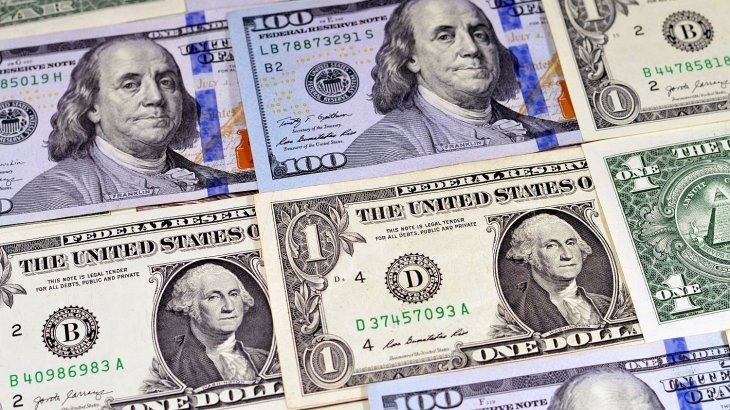since four months than core inflationthat is, one that clears up the effects of the seasonality of some products on the general price index, ranges between 2.7% and 3.3%. The data is not minor, because in the view of economists shows that some resistance still persists in the price path.
As anticipated by Market Expectations Survey (REM) for Novemberjust in May 2% could be broken, and some analysts still see several months ahead with that level of price increase, regardless of the fact that the Government seek to force the decline with an even greater delay in the exchange rate.
As reported by the Central Bank (BCRA), From February, the crawling peg rate will be reduced to 1% monthly from the current 2%, which implies that beyond the fact that the Government has “dried up” the peso market to reduce the rate of increase in prices, it will also play with the appreciation of the currency as other efforts have done in the past.
In this regard, the economist liberal Roberto Cachanosky, critical of the current economic management, he maintained that “inflation is rising and they are bringing the ‘crawling peg’ to 1% per month.” “The BCRA’s argument is that ‘high-frequency observations confirm downward observed inflation.’ Core inflation was 3.2% in December, 2.7% in November, 2.9% in October and 3.3% in September. No high frequency seen in low in core inflation, which does not include regulated or seasonal inflation,” he says. And, in fact, he states that “they throw themselves headlong into the exchange rate delay” to force disinflation.
The least encouraging news: core inflation
For his part, Personal Investment Portfolio (PPI) maintains that “the least encouraging news” from the data published this Tuesday by the National Institute of Statistics and Cencos (INDEC) “it came from the side of core inflation, which accelerated and registered a more marked increase than the general one.” “It rose to 3.2% in December, from 2.7% in November and 2.9% in October. The REM underestimated the recordsince he anticipated that the core is at 2.6%,” the brokerage company indicated in its latest report.
PPI estimates that the reason why the Government decided to speed up the reduction of the “crawling peg”, despite the fact that there are no more marked signs of disinflation, has to do with the increase in the price of unregulated goods, which was 1.9% last month, compared to 1.5% in November. Unregulated goods impact 64% of the Consumer Price Index (CPI) and are more related to the exchange rate.
“lThe idea of the economic team would be to deepen disinflation by influencing unregulated goods (64.3% of the CPI) at the same time that it will give greater attractiveness to the ‘spread’ rate-crawl. We remember that this is key to sustaining the ‘carry trade’ of importers and exporters and that this results in purchases of BCRA reserves,” explains the brokerage company.
dollar face big girl.jpg
The evolution of the dollar is a key element for the evolution of inflation in Argentina.
Depositphotos
For his part, the Center for Argentine Political Economy (CEPA) maintains that “core inflation data show downward resistance (3.2% in December, 2.7% in November, 2.9% in October, 3.3% in September, 4.1% in August, 3.8% in July, 3.7% in June and May)”. “Despite this situation, “The Government decided to reduce the ‘crawling peg’ to 1% per month,” the report indicates. It also says that “the elimination of the Country Tax since December 22 does not seem to have had any effects”
In this regard, Hernán Letcher, director of CEPA, proposed to Scope that “core inflation has no effect on appreciation, beyond what it may mean as an advance of forward inflation.” “It was influenced by the increase in beef, but it is no less true that “anticipates that they will have, in the best of cases, several months to make inflation converge with the exchange rate, with which it will continue to appreciate,” he explained.
Appeal to the exchange rate to stop inflation
Some economists propose that the Inflation is a “monetary phenomenon always and everywhere”, so trying to control the price of another good, such as the dollar, would escape theory. But, strictly speaking, in cases like Argentina, in which the credibility of the institutions and the local currency is very low, it is necessary to appeal to a certain degree of heterodoxy.
Eugenio Mari, chief economist of the Freedom and Progress Foundation, pointed to Scope that, “in the Argentine case, “Our own inflationary history has made us prone to look to the dollar when the national currency fails us.” “It is the famous ‘quasi-bimonetary’ economy situation in which we are. This It is a justification for the BCRA to have opted for a stabilization program with an exchange anchorwhich is the one that most quickly helps both to slow down the prices of tradables and adjust inflation expectations,” he explained.
Mari clarifies that “we must not lose sight of the fact that the exchange rate is the price of one currency with respect to the other,” so “The monetary financing needs of the Treasury, the interest rate and the amount of pesos in circulation must be compatible with the preset exchange rate since otherwise the inconsistencies begin to be seen in the exchange gap and the credibility of the program begins to creak.”
“In stabilization programs there is not only a change in the dynamics of the price level, but also in relative prices. In the midst of a hypermarket, the purchasing power of foreign currency rises and tradable goods increase their relative price. When it stabilizes, the opposite happens and the relative prices of non-tradables recover. What is observed, for example, in the increase in salaries in dollars,” he noted.
Source: Ambito
I am an author and journalist who has worked in the entertainment industry for over a decade. I currently work as a news editor at a major news website, and my focus is on covering the latest trends in entertainment. I also write occasional pieces for other outlets, and have authored two books about the entertainment industry.




